When you plan a visit to Mammoth Lakes during the winter, you probably don’t expect to see wildlife. After all, our most well-known four-legged resident, the American Black Bear, hunkers down for the season from around November to April. And with back-to-back snowstorms since January, chances are, we’re not going to see any warm weather wildlife for quite a while. So much for the beginning of spring!
But, that’s not to say that you can’t see wildlife during winter in the Eastern Sierra! In this article, we’re going to highlight some common and not-so-common animals that you can see even when there’s snow.
Common: Douglas Squirrel
If you’ve been woken up by a rapid-fire chirping outside your window, you might have thought a bird was to blame. But it’s more likely that you were hearing one of our most active winter animals: the Douglas squirrel!
These are small, two-toned squirrels with a yellowish underbelly and dark gray head, back and tail. And while they tend to be less active during the very cold months of winter, breeding season can start as early as February.
Unlike many squirrel species, Douglas squirrels are monogamous and highly territorial. That’s why you’re likely to hear their loud, persistent chatter from morning to night as each squirrel couple defends their territory.
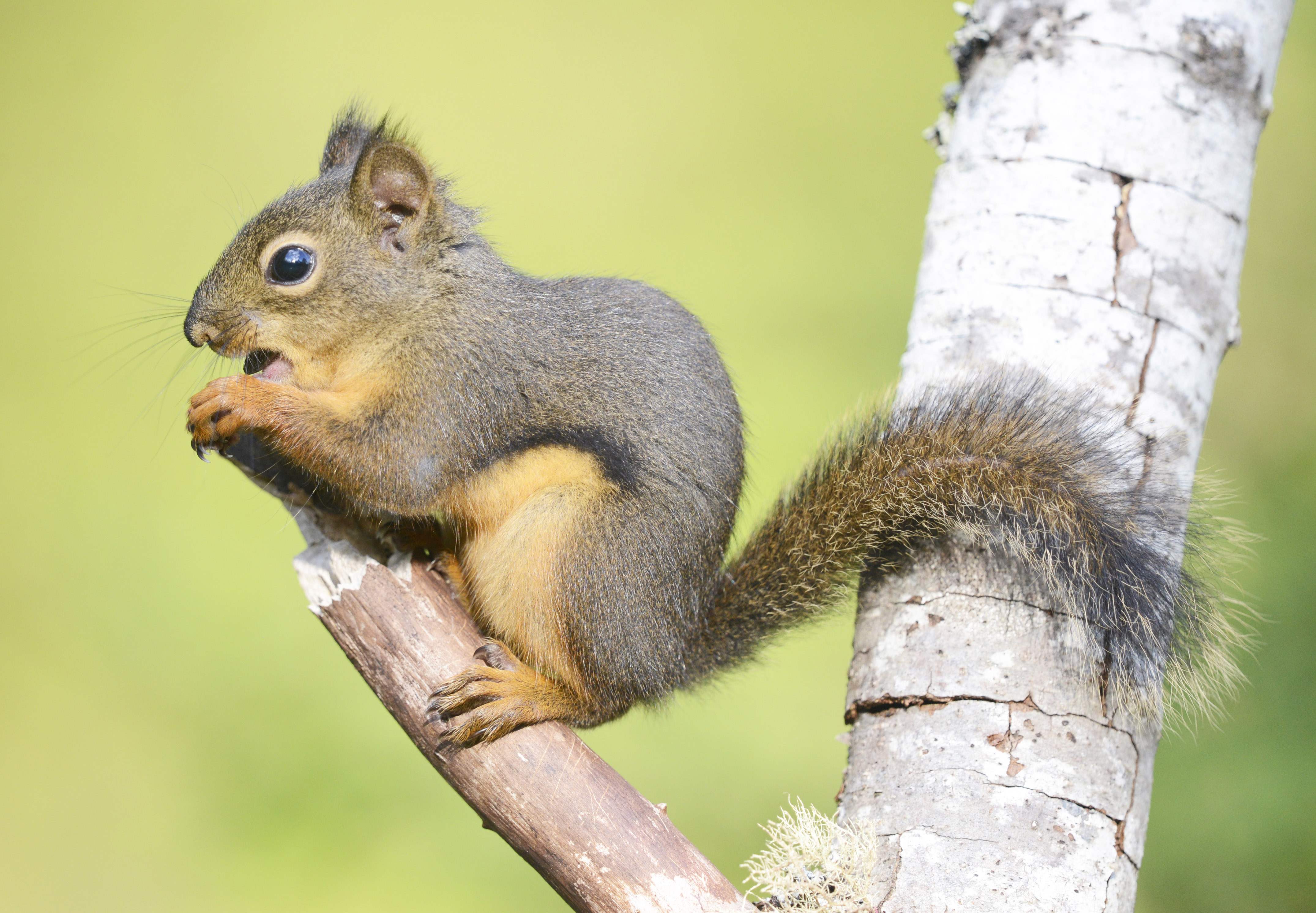
Rare: American Marten
At first sighting, you might mistake an American marten, aka pine marten, for someone’s lost pet ferret! But no, these elongated, furry omnivores are native to the Eastern Sierra. They’re part of the weasel family, which makes them great at climbing trees and squeezing into tight spaces where they den. You can spot them by their dark brown fur and pop of light coloring on their chest. They’ve got an adorable triangle face, small pointed ears and a bushy tail.
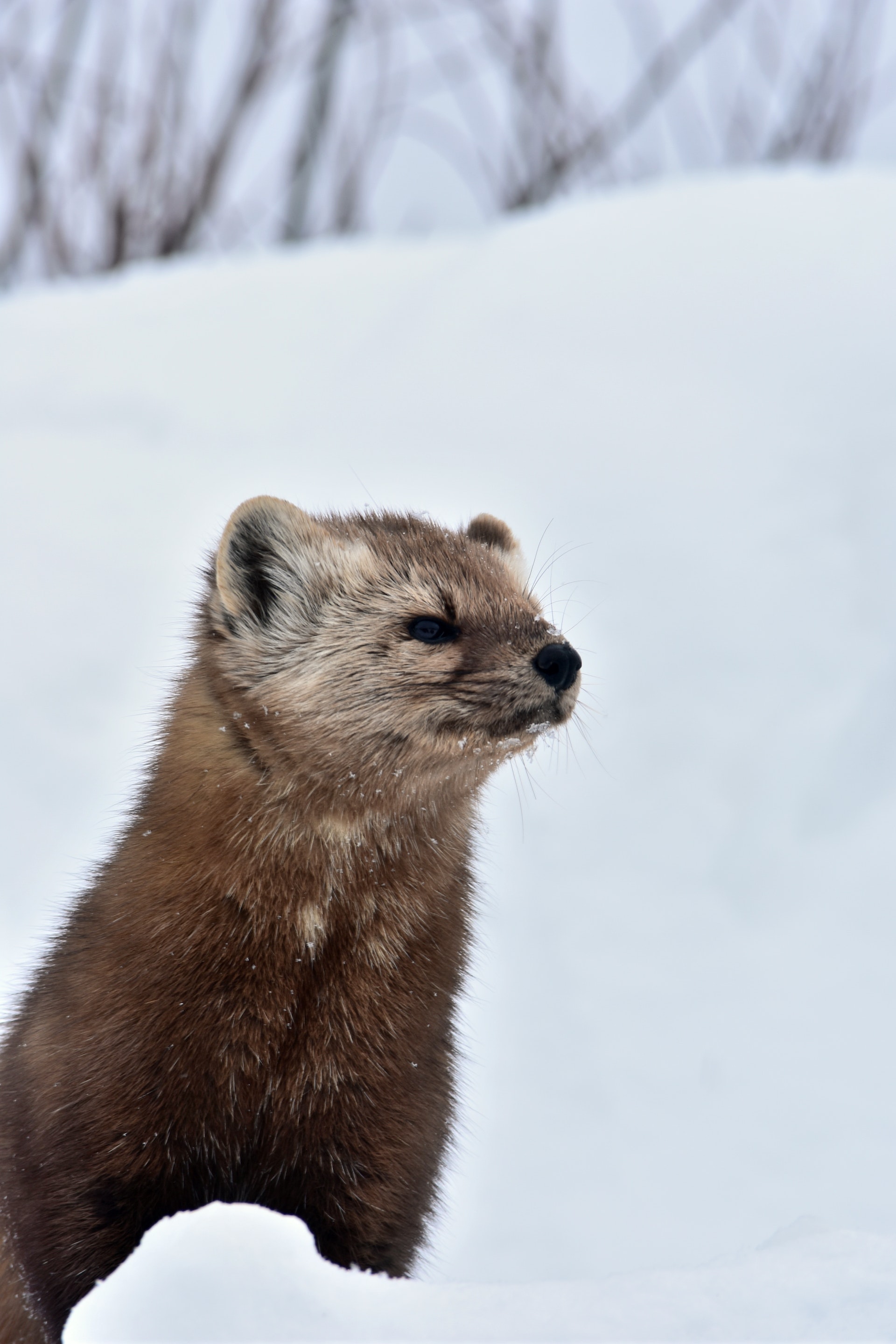
Though elusive, American marten play an important role in our ecosystem by dispersing seeds and managing small rodent populations. And while they may look adorable, they can be pretty aggressive. So, you should never approach one in the wild.
Common: Clark’s Nutcracker
If you’re an avid birder, you’ll be glad that you brought your binoculars with you to Mammoth, even in the dead of winter. That’s because we have an array of species that remain in the area all year long, including the Clark’s Nutcracker.
Like all nutcrackers, this bird is part of the Corvidae family, along with crows and jays. They have a prominent black beak and a light gray body with contrasting black wings and white tail. You’re most likely to see them in flocks rather than on their own, and you can distinguish them by their range of brash calls and caws.
Like the pine marten, Clark’s nutcrackers are key seed dispersers in the Eastern Sierra. A flock can forage and hide thousands of seeds per year, far more than they’ll ever be able to eat. The leftovers keep our forests alive and thriving.
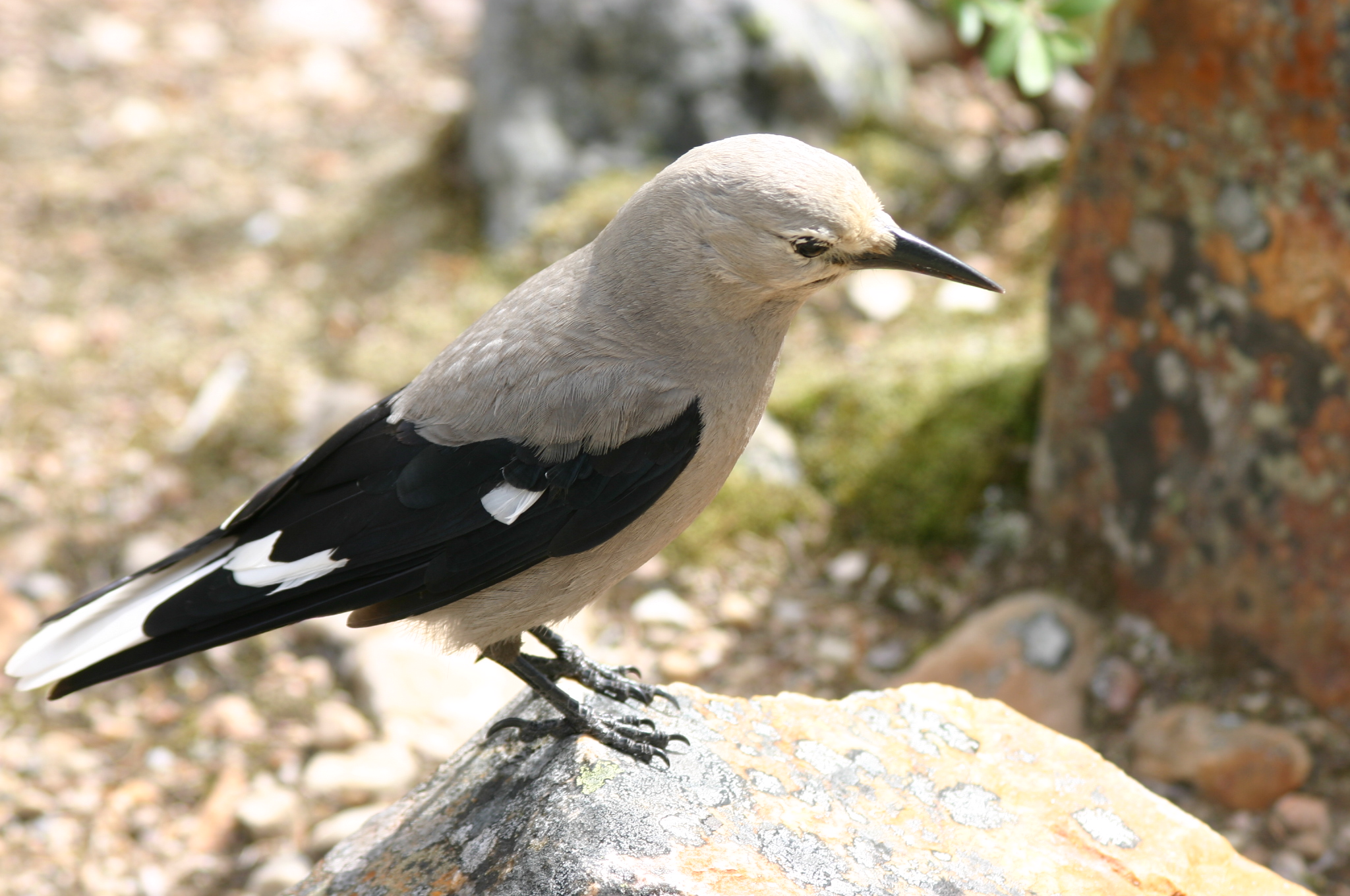
Rare: White-Tailed Ptarmigan
This gorgeous grouse is the only non-native species on our list. According to the Los Angeles Times, 72 of these alpine birds were introduced to Mono County in the early 1970s by the Department of Fish and Game, apparently as a way to attract fowl hunters to the area. But, the introduction was rocky. Transporting the ptarmigan to their ideal habitat could only be done with the use of mules, as early attempts to airdrop them was considered too risky.
The other issue? These birds are just too much of a challenge to hunt! They tend to live at above 10,000 feet and they’ve got seasonal camouflage that makes them very tricky to spot. The easiest way to see them is with the use of a hunting dog to flush them out. But most hunting dogs aren’t equipped for the high elevation and rocky terrain of the Eastern Sierra.
The result is a healthy, relatively untouched population of white-tailed ptarmigan high up in the mountains around Mammoth Lakes. If you happen to be in the backcountry during winter, keep an eye out for their beautiful all-white coat.
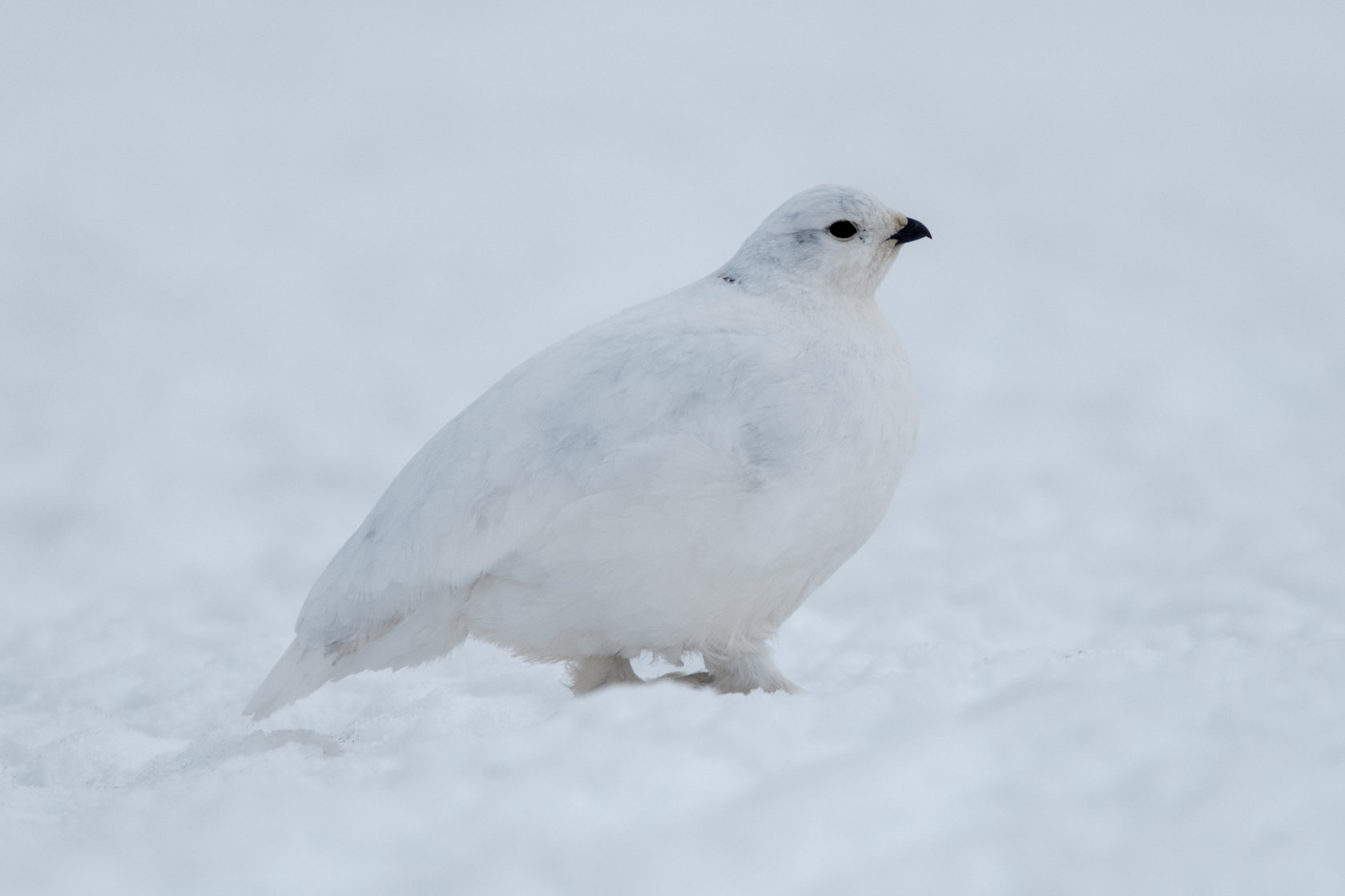
Rare: White-Tailed Jackrabbit
We often think of jackrabbits as desert-dwelling animals, but the white-tailed variety is right at home in the High Sierras. Traditionally, they were called the Sierra Hare, although the new name distinguishes them from their slightly smaller black-tailed cousins.
White-tailed jackrabbits are the largest wild rabbits you’ll see in California, with elongated black-tipped ears and a small, puffy white tail.
The best time to see white-tailed jackrabbits around Mammoth Lakes is during winter, as they extend their range to lower elevations to feed on shrubbery. Even so, they’re most likely to be spotted by backcountry skiers and snowboarders, as they like to hang out around rocky crests. If you do see one, consider yourself very lucky! These rabbits turn completely white in the winter, making them hard to spot!
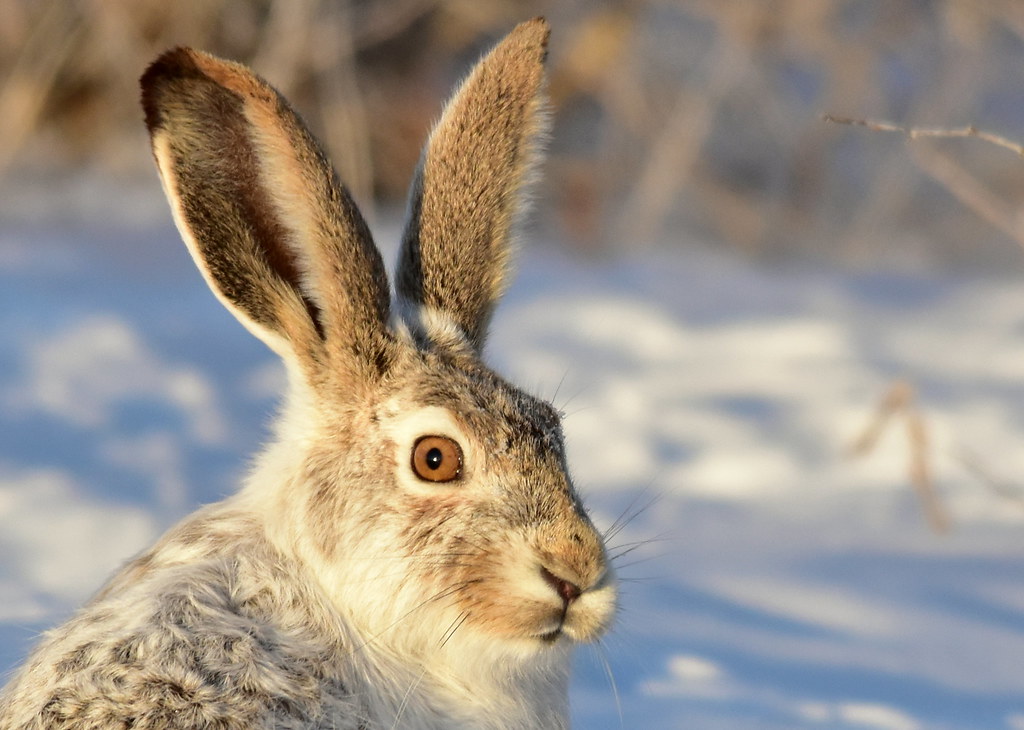
Common: Mountain Cottontail
They may look similar, but mountain cottontails are not the same as the more elusive white-tailed jackrabbit. This variety of rabbit is smaller than their high alpine cousins, with shorter, rounder ears and an overall rounder build. They also have a white tail, but it’s fluffier than a jackrabbit’s.
Because these cute little critters are much more common at lower elevations in the Eastern Sierra than jackrabbits, you can probably guess that any rabbit you see is the Mountain Cottontail. Like their white-tailed relatives, they are also active during wintertime. So, keep an eye out for them or their distinctive tracks in snowy clearnings when you’re snowshoeing or cross-country skiing.
You can enjoy wildlife in Mammoth Lakes all year!
As you can see, there are many different kinds of animals that continue to be active during the winter months in Mammoth. Some of the noisier ones, like the Douglas squirrel and Clark’s Nutcracker aren’t likely to go unnoticed. But, with some good observation skills and a pair of binoculars, you can also see some really special wild animals, too.
Looking to enjoy some wildlife watching in Mammoth? No matter the season, the Eastern Sierra is home to many animals. So, book your condo and start researching which species are most active during your stay!
